v3Di V3D Interaction
The Technology Leader in Volumetric 3D Display
Volume Data (medical)
Volume data, such as medical imaging data, can be displayed in volumetric 3D, after proper segmentation and scaling. The resulted images show soft tissues and bones as a semi-transparent volume in V3D. Transparency depends on density of the tissue (image intensity).
Visible Human Data in Volumetric 3D
(1) The skull (Visible Human Data).
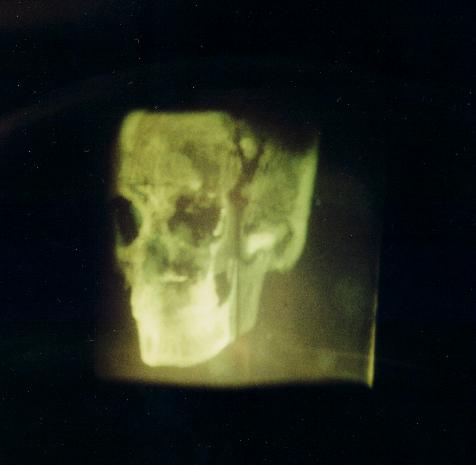
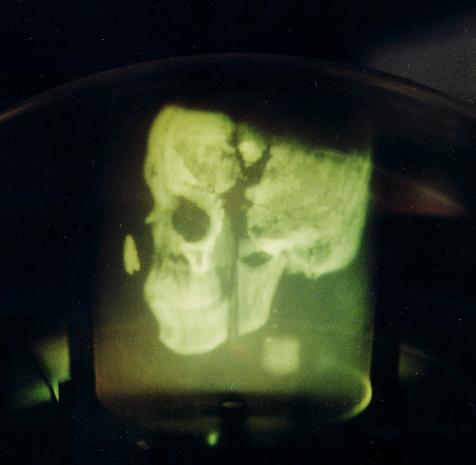
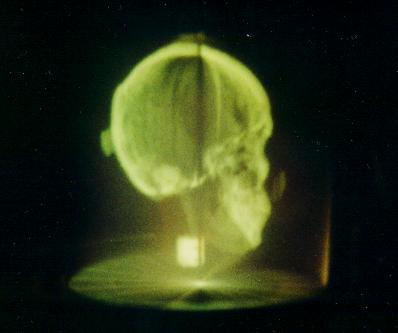
(2) The lower abdomen region of the Visible Human data (axial CT, male) was processed (gray tone re-scaled and roughly segmented) and displayed on one of our VID prototypes. Photo (a), (b) and (c) show the same volumetric 3D image photographed from three different directions. The Visible Human faces Y direction. The white coordinate frame indicates the body orientation relative to the camera. (A - abdomen skin; B - back skin; C - Coccyx; PU - pubic bone; S - Spinal cord)(a) (b)
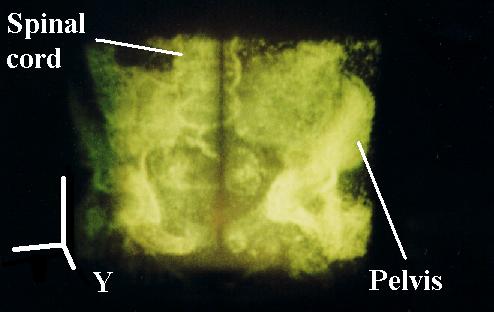
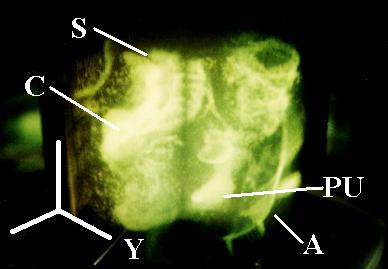
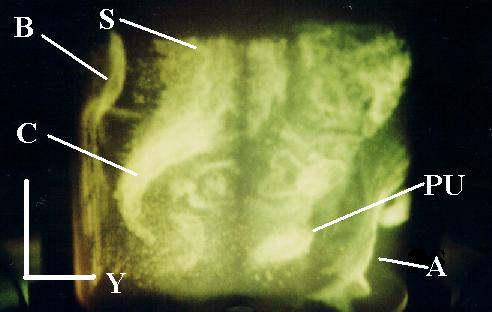
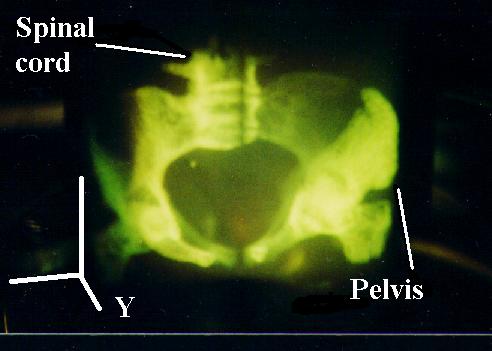
(c) (d)
Photo (d) is the V3D image of the pelvic girdle only, photographed from the same direction as (a).
(The Visible Human Data was provided by the National Library of Medicine of the National Institute of Health. The V3D images were first photographed on film. The photographs were then developed and scanned into digital form. White coordinate frames and labels are added on.)
Copyright 2012 v3di.com. All rights reserved.
